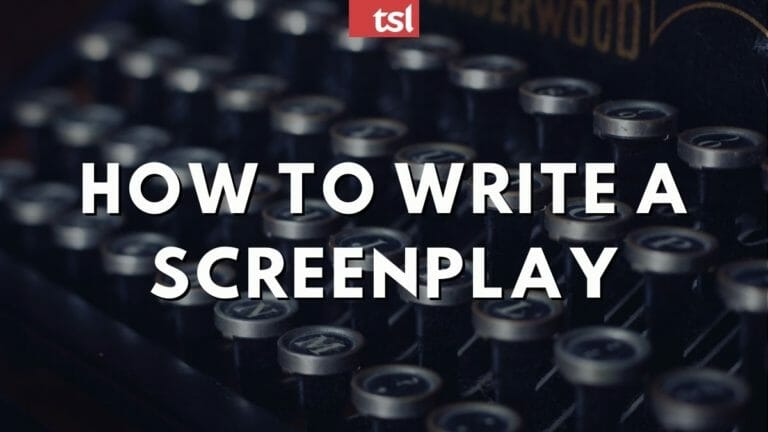By Alex D. Reid · March 3, 2021

If you’ve just recently become interested in screenwriting, you most likely have a few (thousand) questions that revolve around how to write a screenplay, like formatting, crafting a story, and more.
Screenwriting is a format that is uniquely satisfying and also challenging to write. Unlike a novel or a short story, a screenplay is a collaborative blueprint, and as such is an invitation to collaborate in order to create a cinematic narrative.
Today, let’s go over the basics of screenwriting, including how to format a script, as well as the key elements of storytelling.
This is a page from the script of Ex Machina written by Alex Garland:
It looks pretty strange at first glance, but it isn’t terribly different from a stageplay. The bad news is that you don’t write a screenplay like prose. There are very specific formatting guidelines for each element of the script and if they’re not followed you risk being disregarded from the very first page. The good news is that most screenwriting software does the hard work for you so you don’t need to worry about margins, indents, and spacing. I love Arc Studio because it’s easy to use with professional features, and there’s a free version as well.
However, while very helpful, screenwriting software doesn’t do all the work for you. You still need to understand each element of the screenplay format. Here’s a handy list from the Arc Studio shortcut menu:

Of course, screenwriting isn’t just about formatting. You need to tell a great story too. Here are the key elements:
A good story is like a fishing hook. We should be attracted to it and immediately be asking questions about what will happen. Imagine the trailer for your story. What is the sales pitch? Why should people be interested in seeing your film? What is it doing that no story has done before? A killer concept can carry a mediocre script to glory.
While the concept gets a reader’s attention, character is what’ll make them read the whole script. Our empathy with characters is what keeps us engaged with what’s happening on screen. Imagine just watching a boxing match versus knowing each of the fighter’s individually, their wants and needs, and knowing how much of their hopes and dreams are riding on the result of the fight. Suddenly the very same actions are endowed with far more meaning, purely because of character.
Imagine what the Wikipedia article will describe as the story of your script. This is the events of the story that your characters drive. The most common way of structuring this plot is through the three-act structure.
While a surface-level story can be great, we’re naturally drawn to stories whose subtext can enrich our own lives. By seeing stories grapple with big themes like love, loss, meaning, and countless others, we can bring a renewed perspective to our own lives.
Of course while all of the above elements might be excellent, if you can’t construct a compelling sentence then you’re doomed. Each sentence needs to be grammatically sound and use such language that is both brief, yet expressively describes the world and characters.
Once you master the formatting of a screenplay and each of the individual craft elements that make up a great story, you’re well on your way to being a professional.
Looking for some new screenwriting software? Take Arc Studio Pro for a spin for free!
 Alex D. Reid is a professional screenwriter who loves writing horror. He won the horror category at Austin Film Festival for his screenplay Delirium in 2019 and is currently studying for a Ph.D in English Literature with a focus on the horror genre.
Alex D. Reid is a professional screenwriter who loves writing horror. He won the horror category at Austin Film Festival for his screenplay Delirium in 2019 and is currently studying for a Ph.D in English Literature with a focus on the horror genre.